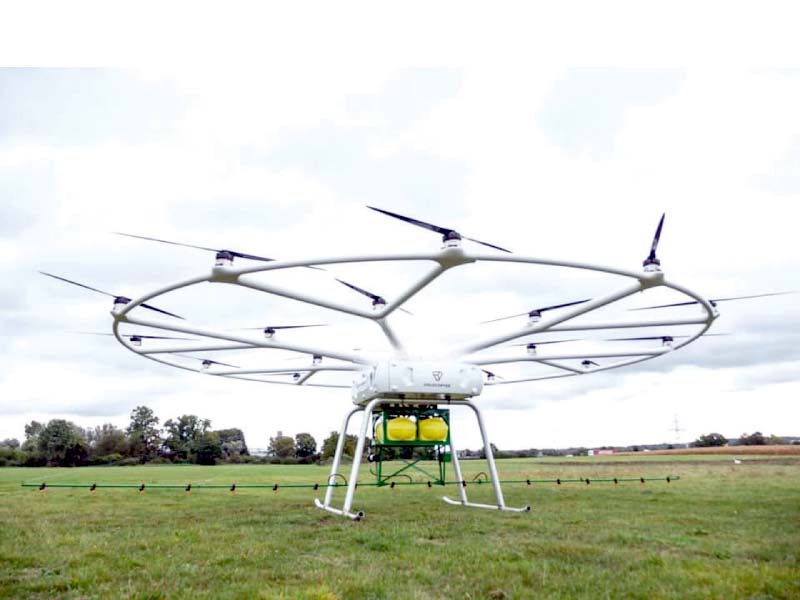
Farmers complain that farms in Karachi’s Malir area, where the attack happened, had not been sprayed with pesticides in the last three decades. Owing to the destruction, they are urging the Sindh government to take steps on an emergency basis to prevent further loss.
To top it all off, the province is struggling with a shortage of helicopters and planes for aerial pesticide spray, which is so far the only way to eliminate locusts in Pakistan.
‘Three planes, 32 vehicles needed to eliminate locusts in Sindh’
Under the circumstances, a young man hailing from Sindh has come up with an inexpensive and more effective solution for the complete elimination of locusts through the use of agricultural drones. Dr Shahzad Nahiyoon belongs to Tando Jam, Sindh. He has recently returned from China after completing a doctorate in Pesticides Sciences with a special focus on pesticides toxicology and application technology.
He is the first Unmanned Aerial Vehicle (UAV) or agricultural drone pilot in Pakistan as well as the only PhD scholar in the country possessing expertise in the field.
Dr Nahiyoon completed a master’s degree in pesticides and plant protection from the Sindh Agriculture University, Tando Jam in 2016. Later, he received a scholarship to pursue his doctorate studies at the Chinese Academy of Agricultural Sciences.
Talking to The Express Tribune, Dr Nahiyoon said that Pakistan can control the infestation of locusts more effectively and easily through the use of agricultural drone technology for pesticide spray.
“To control the situation, the provincial government has asked for at least three helicopters, 32 spraying vehicles and pesticides from the federal government to control the locust swarms attack in various parts of Sindh,” he said. “This is, so far, the only way in Pakistan to deal with the situation which is very expensive.”
According to him, if Pakistan uses the UAV spraying technology, it would prove to be far more effective and cheaper.
“The UAV technology has been tested and deployed at a low scale in different countries of Asia and is now rapidly gaining popularity in China,” he explained.
According to official statistics by the Chinese Ministry of Agriculture, more than 178 types of agricultural UAVs were used in the country in May 2016.
“The UAV has emerged as a capable plant protector because it has high operational efficiency, high speed and low drift. UAVs are more suitable for complex terrain and small-sized farms with separate plots,” Dr Nahiyoon added.
PM Imran lauds Punjab govt for steps taken in the agricultural sector
“In contrast to the commonly used manned fixed-wing aircraft in the United States, UAVs do not require a take-off airport which makes them much more cost-effective. They have higher work efficiency, lower operator exposure and improved ability to spray chemicals in a timely and highly spatially-resolved manner,” he said.
The UAVs have efficiency up to six to 10 hectares per hour. They come with a five to 20 litres liquid tank and a two to 20 meters spraying swath under different field chemical control application conditions. Due to their great value and potential, UAVs have been the subject of much research in the field of spray application.
Published in The Express Tribune, December 1st, 2019.
Like Business on Facebook, follow @TribuneBiz on Twitter to stay informed and join in the conversation.























COMMENTS
Comments are moderated and generally will be posted if they are on-topic and not abusive.
For more information, please see our Comments FAQ